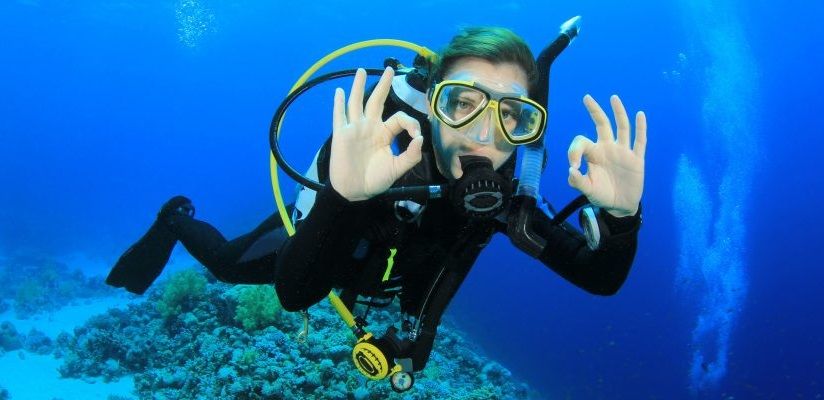Build a better body for better diving
- Posted on
- By Nick Casper
- Posted in Scuba Tips

We all know diving is a very equipment expensive sport, But have you considered improving the most essential part of the scuba unit? Your Body! Our bodies are put under a considerable amount of stressors being underwater that they are not put under on a day-to-day basis. Not to mention the weight of hauling all that gear up a ladder or down the beach.

Strength training and cardio vascular fitness are essential for the safest diving. Many know exercise alone isn’t enough, proper nutrition is also vital to give you the best SCUBA body.
Below are some simple exercises that can be done anywhere with your weight belt as resistance: As well, as some simple nutritional tips.
DISCLAMER: As always before starting any fitness program seek advice from a physician.

Squats- variations
How: Feet shoulder width apart, toes pointed slightly outward; Head up, break at the knees first and sit back rather than fold in half. Do 2 sets of 10-15 reps with bodyweight for beginner, up to three sets for intermediate and enthusiasts can throw your weight belt over your shoulders for added resistance. You can also move your foot position to hit different parts of your legs, narrow for outer thighs and wide for hips, low back and glutes.
Safety tip: Do not lock out knees.
Why: the largest muscles in your body will continue to burn excess calories even after your done, these will help you move up the ladder with ease as well these muscles are essential to moving under water.
Pull ups/ arm hangs
How: Grip an overhead bar with an under handgrip or overhand grip, Pull yourself upwards until your chest meets the bar. Do a variation where you pull up and hang there for as long as possible for beginner, Intermediate do 2 sets of 6-10, enthusiasts can put your weight belt on as if you were going for a dive.
Safety Tip: Do not release your body weight and drop abruptly.
Why: This movement works the largest upper body muscle, the back, as well as the arms. This move will let you hang on the anchor line in a 3 knot current with ease as well as help you get up the dreaded ladder easier.

Push-ups
How: On flat ground place your hands shoulder width apart slowly lower yourself to the ground and push back up quickly. Beginners can go to the knees for reduced resistance enthusiasts can again place the weight belt over the shoulders for more resistance. Do: 2 sets for 15-30 reps
Why: this move balances out the rest of the body and will allow the whole body to become stronger.
Planks
Last but not least the core...
How: this move looks simple however it is quite a bit of a challenge. Hold this one for 2 sets of 30 sec for beginners and up to a minute and a half for the enthusiast.
In addition to the muscle building exercises, fitness and diving can’t be discussed without talking about cardio vascular fitness. According to DAN one third of diving accidents involve cardiac arrest. That is a shocking figure.
Where do you start? Start small! If you are not currently doing anything, start with walking for 15-25 minutes. As this gets easier pick up the pace or switch to a bike. If your local scenery is boring you, head to the beach for a walk or bike along a1a. If you are in fair shape as you should be for diving, the standard swim test that had to be completed for most open water certifications is a great workout. As cardiovascular fitness increases you should begin to notice your air consumption improving another benefit of being “fit-to-dive”
I enjoy eating as much as anyone else. The best way for your body to get the nutrition it needs not just the flavors it craves is to have 4-5 smaller meals a day.

Always start with a great breakfast. And have meals ready to go for every 2-4 hours, and don't rely on the snacks on the dive boat. I am a fan of wraps, they are easy to make, relatively cheap and can be eaten on the go. Meals should consist of approximately one-third vegetables one-third proteins and the remainder of the calories should come healthy carbs baked potato vs. potato chips. Check out this article by PADI about 10 Power Foods for a Pre-Dive Boost PADI.com
Remember, being fit-to-dive involves you being both physically and mentally healthy. Always make sure to schedule a yearly exam with your doctor and let your doctor know you are a diver. You can use the PADI Medical Form as a guide for you and your doctor to assess your diving health.
Happy Diving!
